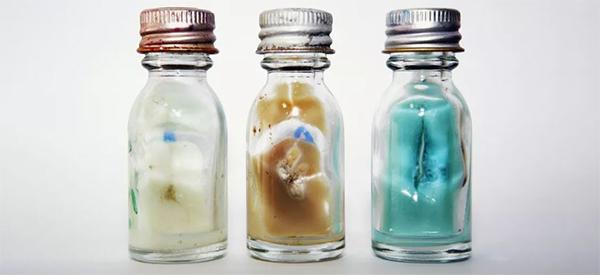The CDC says we should all stop pondering the possibility of entering a post-antibiotic era. The Centers for Disease Control and Prevention staunchly maintain it’s already here. The miracles of modern medicine appear to have met their match – “superbugs.”
These deadly microscopic enemies – bacteria and fungi now cause more than 35,000 deaths annually, according to the CDC. The closely related antibiotic resistance medical threat, Clostridioides difficile, causes approximately 12,000 deaths each year.
Clostridioides difficile, also known as C. difficile, is a bacteria that may prompt deadly diarrhea. Infections of this type typically present in people who are taking antibiotics for unrelated conditions. C. difficile is the most common hospital- or healthcare-associated infection.
Even if you do not overuse antibiotics, you will not be immune to the threat posed by antibiotic resistance. These superbugs, that afflict humans, animals, and agricultural crops alike, are learning how to fend off even potent antibiotics they have never been exposed to.
On an annual basis, roughly 2.8 million people around the globe become infected with drug resistant superbugs. According to Centers for Disease Control and Prevention statistics, approximately every 11 seconds someone becomes infected with a potentially lethal superbug. It gets worse from here folks. On average, every 15 minutes a person dies from an infection that would have been cured by an antibiotic.
Health officials from around the world have been attempting to warn the public about antibiotic-resistant superbugs for nearly a decade. The recently released 2019 report is a follow up to a jaw-dropping report about superbugs from 2013. The first antibiotic-resistant germs report indicated superbugs were killing twice as many Americans as previously thought. Didn’t know anything about the initial report? You are not alone.
One would think a topic this important would be covered widely on the news, but that just is not going to happen in this hyper-divided political climate. The talking heads on television are more interested in sharing their own opinions, and having a member of their respective choir on to “react” in a kindly fashion to what they just claimed, than covering a world health issue.
Related: How To Make Sauerkraut – The Most Effective Probiotic
What Are Superbugs?
Superbugs are microscopic germs and microbes that include fungi, bacteria, viruses, and parasites. While many microbes are harmless, some cause severe infections. These infections, most commonly referred to as “pathogens,” can become deadly if left untreated – or become drug resistant as they are now in post-antibiotic era.
What Exactly Does Antibiotic Resistance Mean?
When a pathogen becomes antibiotic-resistant the antimicrobial and antibiotics medications designed to fight them no longer work. The harmful microbes do not respond to the medication as they’re supposed to, and continue to grow.
Superbugs deemed “multi-drug resistant” cannot be killed by multiple different types of antimicrobials or antibiotics. If a germ is classified as “pan resistant” it will not respond to any available antibiotic.
The Difference Between Antimicrobials, Antibiotics and Antifungals?
- An antimicrobial medication is designed to treat a pathogen infection by either decreasing the growth of microbes or killing them altogether.
- Antibiotics are used to treat bacterial infections. Bacteria causes infections such a E. coli and foodborne illnesses and strep throat.
- Fungal infections such as yeast infections and athlete’s foot are treated by a class of drugs classified as antifungals.
Folks outside of the medical profession often lump all prescription medications designed to treat an illness into one large pot and refer to them as antibiotics.
Weapons Used By Germs
- Resistance Mechanisms – These are the defense mechanisms of germs that are developing to help them thwart antibiotics prescribed to kill them.
- Colonization – This is the manner in which people carry germs – but are not infected by them. When a person is a “carrier” they spread the germs to other people but do not get sick or require medication.
- Isolates – This is the purest stage of any germ.
- Gram Negatives – These microbes are becoming resistant to antibiotics but cannot necessary fend off the prescription medication entirely. They share the new ways they learn to resist drugs with other types of bacteria, effectively spreading the ability to resist efforts towards killing them.
Related: New Deadly Mosquito Borne Virus Claims US Lives – What You Need to Know About EEE
Germs The CDC Has Deemed Threatening
Urgent Threats
- Carbapenem-resistant Acinetobacter
- Candida auris – C. auris
- Clostridioides difficile – C. difficile
- Carbapenem-resistant Enterobacteriaceae – CRE
- Drug-resistant Neisseria gonorrhoeae – N. gonorrhoeae
Serious Threats
- Drug-resistant Campylobacter
- Drug-resistant Candida
- Extended-spectrum beta-lactamase – ESBL producing Enterobacteriaceae
- Vancomycin-resistant Enterococci – VRE
- Multidrug-resistant Pseudomonas aeruginosa – P. aeruginosa
- Drug-resistant nontyphoidal Salmonella
- Drug-resistant Salmonella serotype Typhi
- Drug-resistant Shigella
- Methicillin-resistant Staphylococcus aureus – MRSA
- Drug-resistant Streptococcus pneumoniae – S. pneumoniae
- Drug-resistant Tuberculosis – TB
Concerning Threats
- Erythromycin-resistant group A Streptococcus
- Clindamycin-resistant group B Streptococcus
Watch List
- Azole-resistant Aspergillus fumigatus – A. fumigatus
- Drug-resistant Mycoplasma genitalium – M. genitalium
- Drug-resistant Bordetella pertussis – B. pertussis
Antibiotics save lives, but any time antibiotics are used — by people, animals, or crops — they can cause side effects and contribute to the development of antibiotic resistance.
Related: What Really Happens When You Take Antibiotics After Their Expiration Date
Where Are These Germ Threats Found?
These germs are basically, well, everywhere. The health of human beings is interconnected with the health of the environment that surrounds us, the crops we grow to feed us, the water we drink, the animals we keep – and the animals we eat.
Antibiotic-resistant germs can quickly spread across the soil, water, food supply, neighborhoods, entire communities and especially hospitals.
In one case study featured in the same recent Centers for Disease Control and Prevention report, a healthy man named Mike was one of 114 people across 17 states who became ill and was hospitalized after his new puppy transmitted the multidrug-resistant Campylobacter germ to him. This massive and severe outbreak was linked to a multitude of pet store puppies.
Spread of antibiotic resistant bacteria and fungi in hospitals from patient to patient, patient to staff, patient and staff to their families and friends, and to other healthcare facilities where the cycle starts all over again when the patient is transferred – including to the first responders who aided in the initial and subsequent transports and their families. It is not difficult to see just how easily and quickly a single infected person can infect many others with antibiotic-resistant germs.
Once a drug-resistant germ is passed from one person to another, or from an animal or environmental contact to a person, it is effectively set loose on society and becomes increasingly more difficult for the CDC, and other health professionals, to contain.
Drug resistant germs impact the most vulnerable members of society – babies, young children, the infirm, and senior citizens – to a vastly disproportionate percentage.
How Are Antibiotic Superbugs Spread?
These deadly superbugs spread in a variety of ways. Unless you keep yourself in a bubble 24/7 it would be virtually impossible to avoid potentially coming into contact with them – and you won’t even realize it.
Physical Contact
One of the ways the CDC is working to prevent the spread of antibiotic resistant bacteria and fungi is by urging safer practices in hospitals and medical care facilities. When a staffer rotates from working with or transporting one patient to another without washing their hands that’s almost certain to spread any infections.
Surface Contamination
Again, the efforts of the CDC are focused keenly on hospital environments as well as surfaces we encounter during our daily lives. Patient bed rails, medical equipment, counter tops and personal care items, like towels.
One would think that hospital staff would be hyper-conscious about germs, but apparently that is not always so. I distinctly recall being shocked six years ago when my husband wound up in an isolation unit in an intensive care ward at our local hospital – and the CDC being alerted about his meningitis emergency.
The staff at the hospital required visitors sign in before going into his isolated room and had to wear booties over shoes, a paper hospital gown over clothes, a medical mask, but no one had to wear gloves. Not only that, there were no restrictions about carrying in a purse or sacks. Sure, visitors were supposed to use the antibacterial dispenser on the wall outside of the room upon exiting, but at that point any germs were already attached to their hands, the doorknob, and on a purse that could be sat down anywhere outside of the room – germs still intact.
When the doctor came in to give updates on his condition, his gloveless hands were placed on the doorknob and bed rails. Nurses too touched common areas in the room without gloves.
Thankfully for our family, my husband’s cultures came back and showed he had contracted viral instead of bacterial meningitis. He survived – without spreading potentially lethal germs. But, during the four days he spent in the isolation unit, no fewer than twelve people had been in and out with exposed hands, making them potential carriers or infected future patients.
Animals
There are two ways you can contract antibiotic resistant germs from animals. You can contract deadly germs from an animal by touching one that has drug resistant germs on its body or in its saliva. Typically, coming into contact with contaminated animal feces is how these germs are spread.
We can also contract the same type of potentially lethal germs by eating contaminated food that comes from animals.
Sexual Contact
Having unprotected sex with a person who is carrying an antibiotic-resistant N. gonorrhoeae or Shigella bacteria can mean you end up becoming infected.
Sharing Air
The TB bacteria is one of the types of drug resistant germs that can move from person to person. It isn’t just transmitted via a cough, but can be passed on when the infected person or carrier merely breathes or speaks near another.
Contaminated Water
Water, not only from sewage systems but plumbing – especially in hospitals or from recreational swimming areas – can also spread superbugs.
What Is The CDC Doing To Combat Antibiotic Resistance?
Since the 2013 CDC report was shared with governmental entities, a little progress has been made. The Centers for Disease Control and Prevention launched a plan-based series of coordinated actions that can help control and prevent the spread of antibiotic resistant germs in the United States and around the globe.
Infection prevention and control is at the heart of the plan. Tracking infections, sharing data across agencies and reducing the unnecessary use of antibiotics are key components of CDC’s plan. Investing in improved diagnostics, vaccines, and therapeutics are also part of the agency’s plan to slow down the spread and tragedy caused by superbugs.
Even if you only use antibiotics as directed and not for viral infections, take sanitary precautions at all times. Avoid lotions and other consumer products that contain antimicrobial agents that could also teach germs to become more resistant to antibiotics. You could still become unintentionally infected patient zero – with few or no responsive treatments to prevent you from contracting sepsis and dying.
A SHTF level pandemic could be lurking just over the horizon – or perhaps on an ATM machine or gas pump only a few miles from your home. It seems there is little that we can do than cross our fingers and hope neither we or no one we love becomes one of the unlucky millions who have come into contact with a strain of antibiotic resistant bacteria.
You may also like:
The Antibiotic Honey That Shouldn’t Be Missing From Your Stockpile
Woman With MS Survives in the Wild With Just a Knife and the Plants She Found (Video)
Just Like Doxycycline: The Antibiotic That Grows in Your Backyard
















I was infected with a hospital acquired vancomycin resistant staph infection in 2006 that went septic and put me in a coma. Experimental antibiotics saved my life but left me with chronic systemic tendinitis due to myelin sheath damage. I wish they had tried IV vitamin C on me instead. I was told that Out of three cases, I was the only survivor that year. The superbugs have been incubating for longer than a decade. They can mutate 1000 times faster than humans can. Did we really think we could win a war against Mother Nature? And it isn’t just antibiotics creating superbugs. Vaccines are causing the same shift in “vaccine preventable “ infections causing the strains to become more virulent and deadly over time. We are our own worst enemy. If we had left these bugs alone, they would have evolved to be less deadly and then symbiotic within the human microbiome over time. Because we decided to fight them, they are evolving in the opposite direction. Mother Nature will win this war. I’m just hoping some of us will survive it.
Dude, you seriously need to learn to edit/proofread before you publish. That was painful.
But I continued reading to the end because the content was good.
Your article was poorly constructed as if by someone not familiar with the English language. Please get a U.S. educated person to write any future articles…please…and proofread.
I am a former editor. I didn’t find it difficult to read. Chill out.
Bob! Have you and Elsa been drinking out of the same toilet? You know that trolls are not allowed to breed.
Not sure what the problem is. Too many words with multiple syllables?! It read fine to me.
Yo! 🙂 No one is ever a former editor. the ulcers follow us forever. niio
? You may be right, Red!
Elsa! Are you on drugs,stupid,or bat shit crazy?
There is nothing wrong with the article.Only a f***ing troll
would criticize it.
Norm: And a-tolling they go. Like Pappy would say, they’re kid of people who would complain is hung with a new rope. Maybe if we asked what they’re complaining about? Like, ask examples of these alleged screw ups. If they really have any… 🙂 Good post, and thank you. niio!
We use hyperbaric oxygen and ozone treatments as well as UV blood treatments for treating microbial infections and viruses. UVB was what was used Just before antibiotics came around and was very effective. AND it doesn’t harm the host (unless there is a sever die-off)
among the biggest reasons for bacteria becoming resistant to antibiotics are:
– antibiotics used in animal raising (mainly chicken, pork, and farm-raised fish from South America and Asia)
– people not completing their antibiotic treatment. If you’re prescribed a 10 day course, don’t stop after 5 days because you feel better! If you do, any bacteria that are left alive are the ones that already had a partial immunity against the antibiotic you were taking, and they will now multiply and be harder to kill next time. ALWAYS finish the complete course of medication, unless that’s not possible (i.e. side effects or adverse reactions.
Doctors not prescribing antibiotics for a long enough period also contributed to resistance. They would give antibiotics for 5 days for a sinus infection. Not near long enough. A sinus specialist would give them for at least 14 days.
Yes, but antibiotics only work against bacteria. If on them too long, you can catch a lot of viral and fungal infections because to kill one bad bacteria, you kill off dozens of good ones. The USSR was developing beneficial bacteria, which were species specific. they only went against what they were bred for and died when that disease was gone. fed only on other bacteria, or viruses, or fungal infections. When a safe penicillin came out, they put it on the back burner. With China for a neighbor, Putin is funding it. niio
Never work against Mother Nature by putting chemicals into your body. Mother Nature provides every CURE needed to survive whatever disease you come down with. Herbal medicine has been around since before the invention of time.Who would you trust more, a “doctor?” that treats only the symptoms and not the root cause or a skilled person that cures your disease? Do yourself and your family the biggest favor possible and learn Herbal Medicine rapidly.
An other good remedy that has been around for a very long time but is seldom heard of is hydrogen peroxide therapy. But you must follow the protocol to the T. I”m sure you can find it on the web. Look for Dr.Warbug 1931
When in Mexico, I don’t ‘do’ Cancun or other places, but like small mountain hotels. the Sierras are where I breathe pines, not the stench of civilization. the barrancas, the gorges, are awesome. But, like any sub tropical area, tend to have more than its share of deadly bacteria and fungus. I chew tobacco, just in case. Mexico introduced that to the world because it works. If I accidentally consume water, drink, get it in the eyes and so on, I don’t have a problem. Even better is supposed to be calendula petals. For bladder infections, common with those using farm wells, a little chew knocks it out. Most places in Mexico take strong caution, even going into the expense of buying distilled water to cook with and drink. Most Mexicans prefer to go to a healer, and herbalist for most things. I do because I was raised that way. One great-grandfather was a Healer, one stepdaughter is. Lung problems, bacterial and fungal pneumonia, we use cloves in cigarettes. for viral, zinc. Make sure the cloves are ground because whole cloves tend to blow up 🙂 niio
The jungle has it’s share of unstoppable bugs too, like Leishmaniasis, which is as hard to kill as it is to spell. I was fortunate enough to have essential oil of Oregano with us while traveling. Highly recommended if you are returning to the jungle.
Thank you, but it was in the sierras, 6,000 foot level. Even here, Even in Arizona, no one drinks creek water. Too many parasites. When in PA, we always went swimming in the river. they had stocked beaver in a number of places upstream but didn’t bother to let anyone know the beaver all carried giardiasis, a dangerous parasite. A lot of folks got sick. No one who listened to the healer did because we were told to use tobacco. Even a large pinch off a cigarette and swallowed with water will usually knock it back within hours. Copper works, as well, and that’s one reason it, brass, and silver are sacred to our elders around the world. I’m very cautious about using any metal as medicine but they do work well. niio
I had a kidney transplant, and got a life-threatening pseudomonas infection at the same time. As if having a transplant wasn’t enough, I was hospitalized 7 times in the first transplant year. Awful experience.
Wanted to note that there is plenty of info being shared out there. Depends upon what you watch, read, or listen to. Researchers have made some inroads, but the advice to finish your full course of antibiotics is sound.
For myself, no. Too much antibiotics can lead to fungal and viral infections. Few bacteria are bad, and many feed on parasites. After returning home from open heart, I had a lung infection that the antibios did not touch. It’s reoccurring but not chronic. While I was happy to have stopped smoking, it always comes back then. A few cigarettes with ground cloves in them knocked it out. And, mind, herbals can be dangerous. Cloves can affect the heart badly, but only if abused. niio
Absolutely right. Overuse of antibiotics can cause more problems than they cure. The superbugs are scary. So are the mutated strains of viruses like the one in China right now—and at the height of the Chinese New Year, in the most populous country in the world. It’s definitely something to keep an eye on.
Time to break out that gallon jug of Pepto-Bismal, brother. 🙂 WWII, the Japanese were experimenting with biological warfare in Mongolia. Word is, Mao’s people did not destroy the facilities.The socialists continued the work and if you look, you’ll find that strange new diseases always seem to pop up first among dissident groups. At the end of the war, Hitler had sent some half-million SS and Gestapo out to sympathetic nations, like the USSR, and the USSR helped Mao take China. Russia still has a program where they ‘breed’ bacteria to destroy bad bacteria, viral infections, and fad fungi.Putin, with a neighbor like China, is supposed to have refunded the program fully. The the best to you and a prosperous New Year. niio
I dont have a memory like an elephant. Why are you preventing me from pinning items.May as well not have you email me your items.
Excuse me, but out of curiosity, could it be something the government doesn’t want you to have? A stepdaughter who’s a computer programmer says so. the one to talk to would be Ohio Prepper, our electronics wizard.
Okay, I give up. What does “Heretara” in the title of the article mean? I am unable to find a definition.
Hereditary, passed on in genes. Evolved. niio